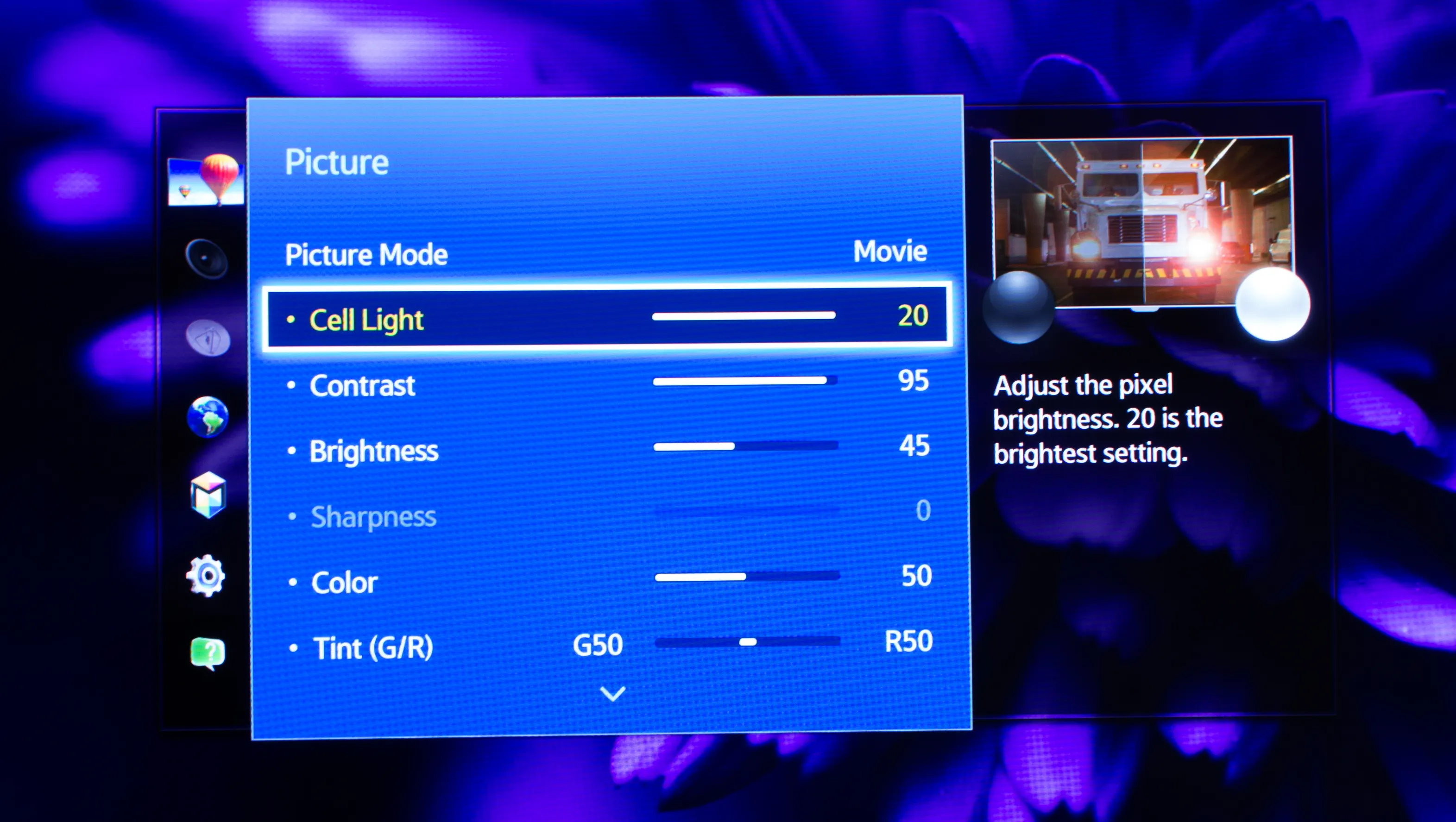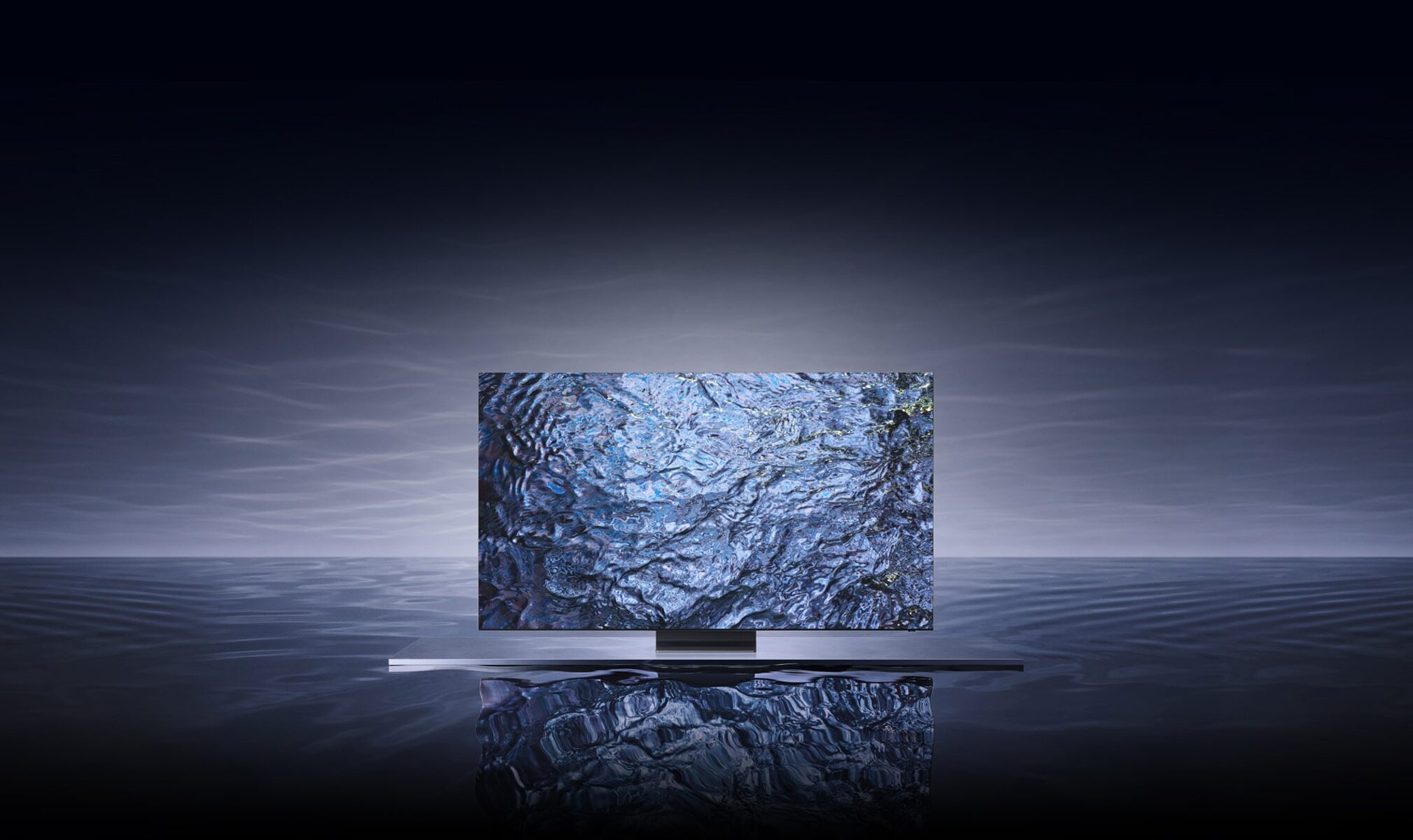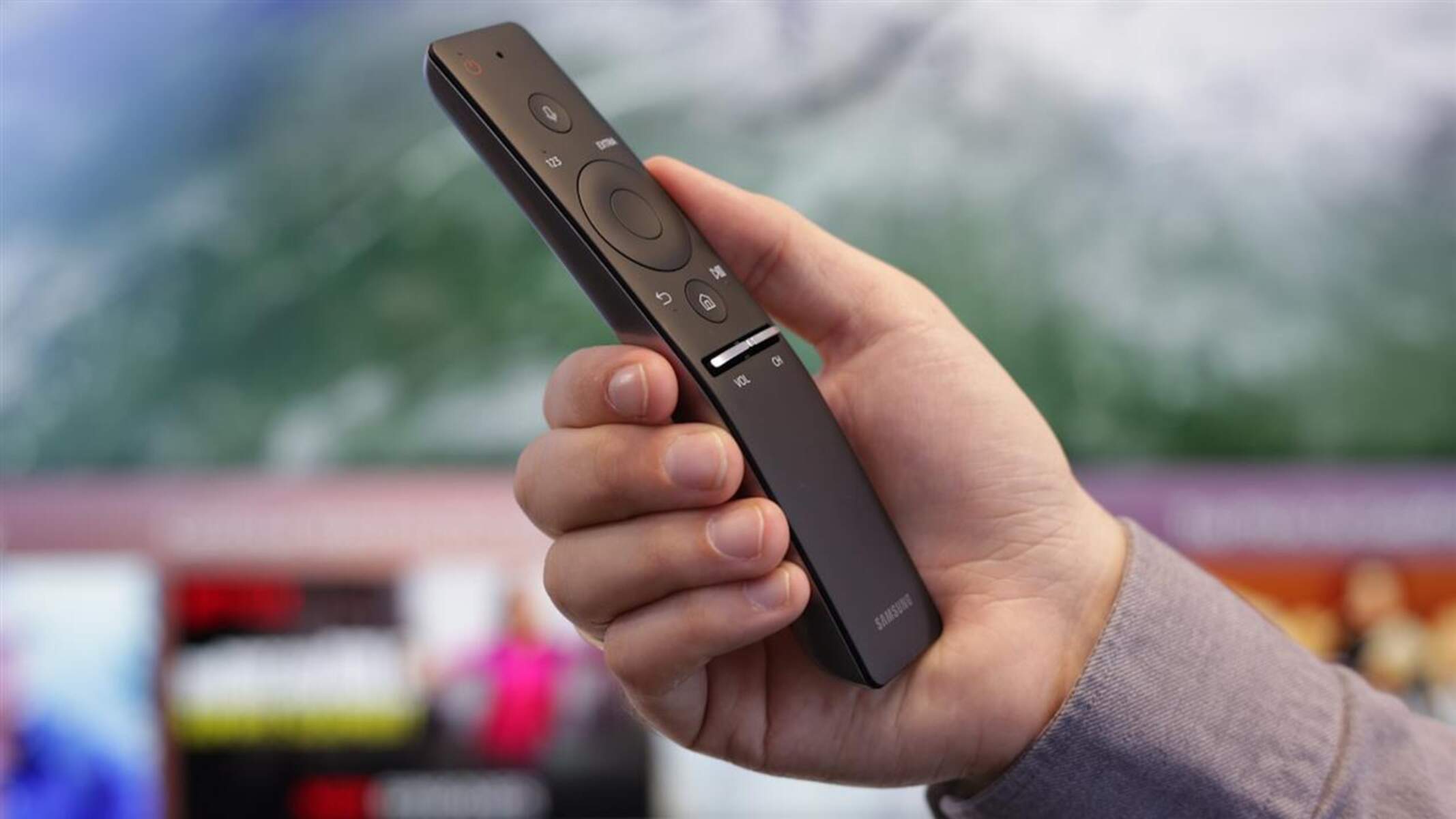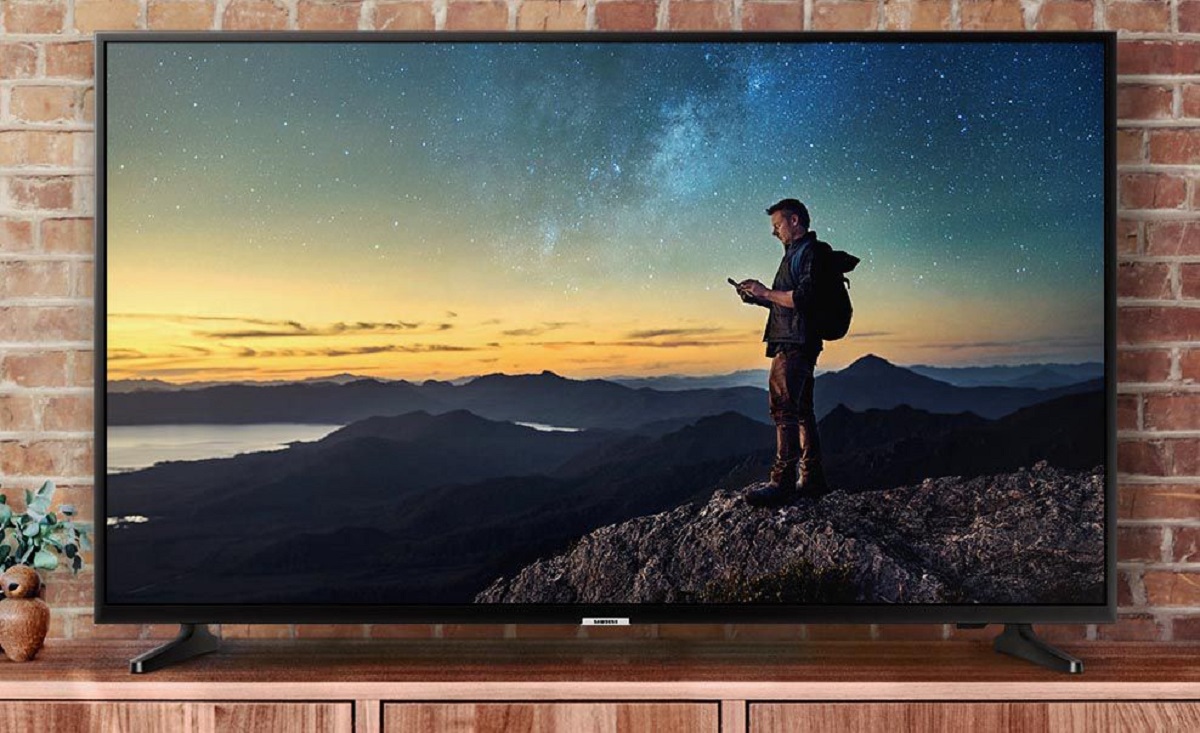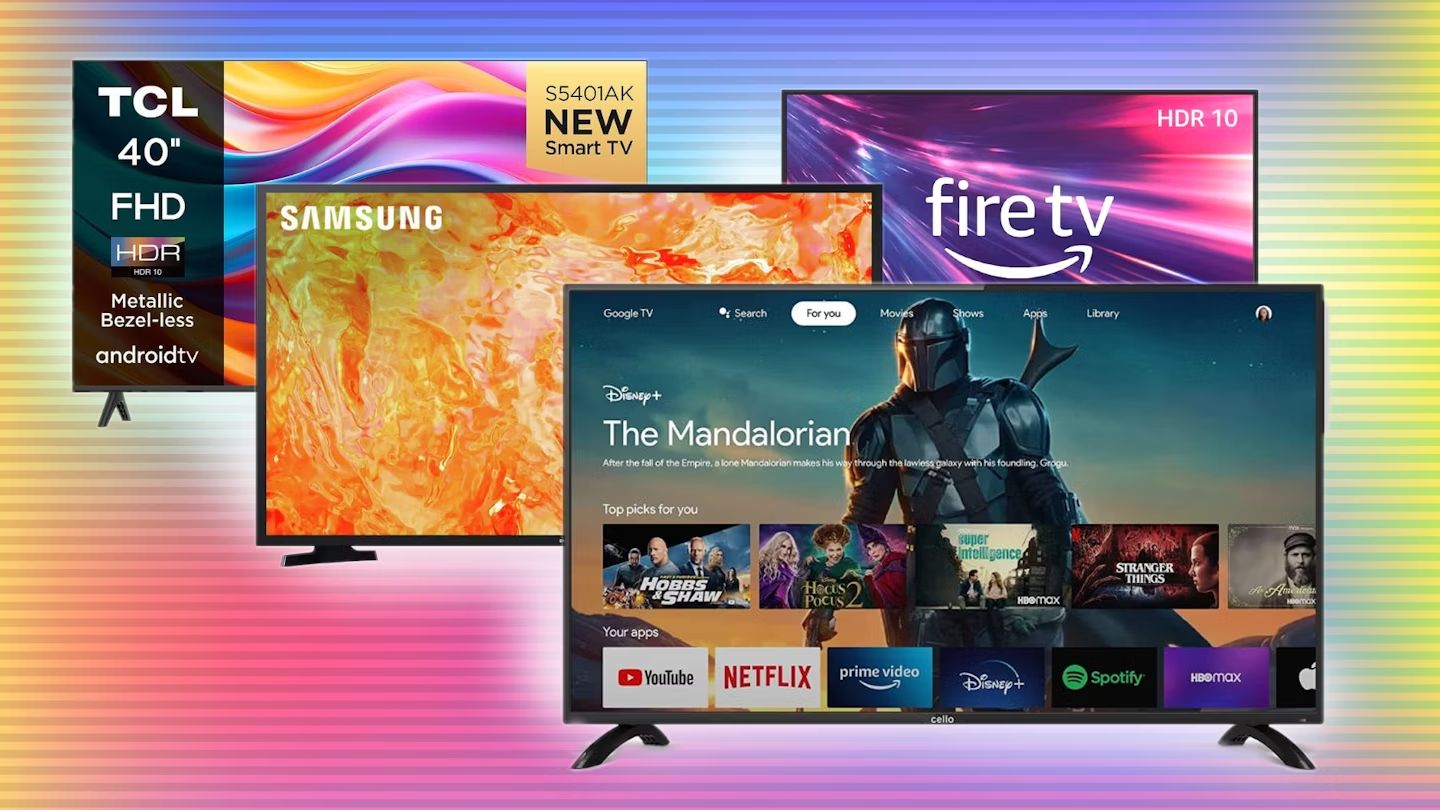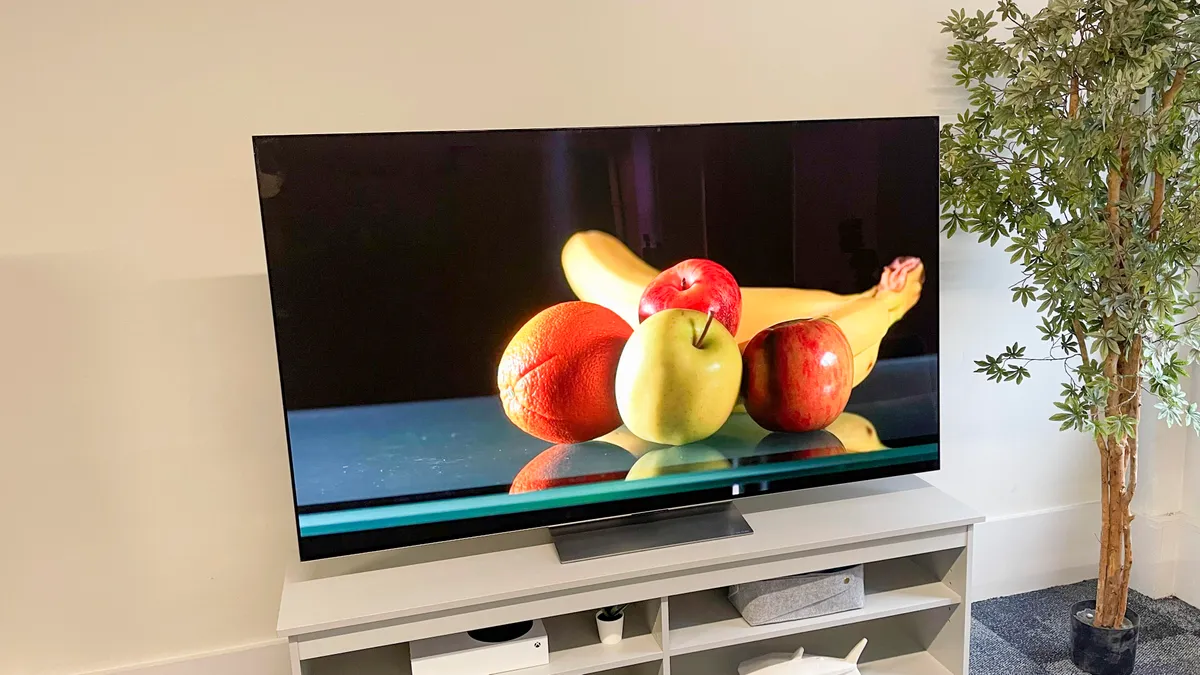Introduction
Welcome to this guide on how to adjust color settings on your Samsung Smart TV. The color settings on your TV play a crucial role in delivering vibrant and accurate visuals, enhancing your overall viewing experience. Whether you want to make subtle adjustments or completely customize the color settings, this article will walk you through the various options available.
Samsung Smart TVs offer a range of picture settings that allow you to adjust the color, contrast, brightness, and other visual aspects to suit your preferences. Understanding these settings and learning how to optimize them can help you to achieve the best possible picture quality.
In this guide, we will explore the different options for adjusting the color settings on your Samsung Smart TV and provide step-by-step instructions on how to make the necessary adjustments. From calibrating the color temperature to customizing the color space, we will cover it all.
It’s important to note that each TV model may have slightly different menus and options. So while the general principles and steps described here will apply to most Samsung Smart TVs, the exact locations and names of the settings may vary.
Before we dive into the details, it’s essential to understand the impact of color settings on your viewing experience. By making precise adjustments to the color settings, you can ensure that you’re getting the most accurate and vibrant colors from your TV.
So, if you’re ready to take your viewing experience to the next level and learn how to adjust the color settings on your Samsung Smart TV, let’s get started!
Understanding Color Settings on Samsung Smart TV
Before you begin adjusting the color settings on your Samsung Smart TV, it’s crucial to have a basic understanding of the different options available. By familiarizing yourself with these settings, you can make informed decisions and achieve the desired visual results.
One of the primary color settings on your Samsung Smart TV is the Picture Mode. This setting allows you to choose from preset modes that automatically adjust the color settings based on the content you’re watching. Common options include Standard, Movie, Game, and Dynamic. Each mode is designed to optimize the picture settings for specific types of content or viewing environments.
Another essential color setting is the Color Temperature. This setting determines the overall “warmth” or “coolness” of the color tones on your TV. You can usually choose from options like Warm, Standard, and Cool. Warm settings tend to enhance red and yellow tones, while cool settings emphasize blue tones.
Contrast and brightness are two additional color settings that greatly impact the overall picture quality. Contrast determines the difference between the darkest and brightest parts of an image, while brightness controls the overall lightness or darkness of the picture.
Color Space is another vital setting that allows you to adjust how colors are displayed on your TV. It offers different options like Auto, Native, Custom, and more. “Auto” lets the TV automatically select the color space based on the input signal, “Native” maintains the color space of the original content, and “Custom” allows you to manually fine-tune the color space to your preference.
If you’re looking for a more dynamic and visually striking picture, the Dynamic Picture Mode can enhance the overall color intensity, contrast, and brightness. However, keep in mind that this mode may not be suitable for all types of content, as it can sometimes produce oversaturated colors.
Understanding these basic color settings on your Samsung Smart TV will provide a solid foundation for optimizing your viewing experience. In the following sections, we will explore each setting in more detail and guide you through the process of making adjustments.
Now that you have a grasp of the fundamental color settings on your Samsung Smart TV, let’s proceed to the following sections to learn how to adjust each setting to achieve the best possible picture quality.
Adjusting the Picture Mode
The Picture Mode setting on your Samsung Smart TV allows you to choose from a range of preset modes that automatically adjust the color settings based on the content you’re watching. Each mode is optimized for specific types of content or viewing environments. Here’s how you can adjust the Picture Mode on your Samsung Smart TV:
- Start by pressing the Menu button on your remote control.
- Navigate to the Picture tab using the arrow keys and press Enter.
- Look for the Picture Mode option and select it.
- You will see a list of preset modes such as Standard, Movie, Game, and Dynamic. Each mode is designed to enhance specific aspects of the picture quality.
- Highlight the desired Picture Mode and press Enter to select it.
It’s important to note that the Picture Mode settings can vary depending on your specific TV model. Some models may offer additional modes like Sports, Vivid, or Eco. Experiment with different modes to find the one that suits your preferences and the content you’re watching.
If you want to further customize the Picture Mode settings, you can access advanced options like Backlight, Contrast, Brightness, Sharpness, and Color. These settings allow you to fine-tune the picture quality according to your preference. Remember to make subtle adjustments and avoid overdoing any particular setting, as it may result in an unnatural or unbalanced picture.
By adjusting the Picture Mode, you can optimize your Samsung Smart TV’s color settings to deliver an enhanced viewing experience. Experiment with different modes and fine-tune the advanced settings to achieve the best possible picture quality for your specific needs and preferences.
Calibrating the Color Temperature
The color temperature setting on your Samsung Smart TV determines the overall “warmth” or “coolness” of the color tones displayed on the screen. Calibrating the color temperature can significantly impact the visual experience, ensuring that the colors appear as intended by content creators. Follow these steps to adjust the color temperature on your Samsung Smart TV:
- Press the Menu button on your remote control to access the main menu.
- Using the arrow keys, navigate to the Picture tab and press Enter.
- Locate the Color Temperature option and select it.
- You will typically find preset options like Warm, Standard, and Cool.
- Select the desired color temperature option based on your preference.
Choosing a warmer color temperature (e.g., Warm) adds more red and yellow tones to the picture, resulting in a cozy and inviting ambiance. On the other hand, a cooler color temperature (e.g., Cool) adds more blue tones, producing a crisper and cooler appearance of the image.
When calibrating the color temperature, it’s essential to consider the surrounding lighting conditions. If you’re watching TV in a dimly lit room, a warmer color temperature can create a more comfortable and cinema-like atmosphere. In a well-lit room, a cooler color temperature might be more suitable to counterbalance the ambient light.
Keep in mind that individual preferences may vary, and there’s no “correct” or “standard” color temperature setting. The goal is to find a suitable balance that provides a pleasing and natural-looking picture based on your personal preference and viewing environment.
By calibrating the color temperature on your Samsung Smart TV, you can fine-tune the colors to ensure a more accurate and visually appealing experience. Experiment with different temperature options, consider the viewing environment, and adjust accordingly until you find the perfect balance for your needs.
Tweaking the Contrast and Brightness
The contrast and brightness settings on your Samsung Smart TV play a crucial role in determining the overall picture quality. Adjusting these settings can help you achieve the perfect balance between dark and light elements, resulting in a more vibrant and immersive viewing experience. Follow these steps to tweak the contrast and brightness on your Samsung Smart TV:
- Press the Menu button on your remote control to access the main menu.
- Navigate to the Picture tab using the arrow keys and press Enter.
- Look for the Contrast and Brightness options.
- Use the arrow keys to adjust the Contrast and Brightness levels.
- Make subtle adjustments to find the setting that provides the desired balance and optimal picture quality.
Contrast refers to the difference between the darkest and brightest parts of an image. Increasing the contrast can make the picture appear more dynamic and vivid, while decreasing it can create a softer and less pronounced image. It’s important to find a balance that retains detail in both dark and bright areas, ensuring a more visually pleasing experience.
Brightness, on the other hand, controls the overall lightness or darkness of the picture. Increasing the brightness can make the image appear more vibrant and clearer, while decreasing it can create a darker and more contrasted image. Again, finding the right balance is essential to avoid either a washed-out or overly dark picture.
When adjusting the contrast and brightness settings, consider the lighting conditions in your viewing environment. If you’re watching TV in a brightly lit room, you may need to increase the brightness to compensate for the ambient light. On the other hand, a dimly lit room might require a lower brightness setting to prevent eye strain.
As each TV model may have different default settings and capabilities, it’s recommended to refer to the user manual or online resources specific to your Samsung Smart TV model for more precise instructions.
By tweaking the contrast and brightness settings on your Samsung Smart TV, you can fine-tune the picture quality to suit your preferences and ensure an optimal viewing experience. Experiment with different settings, make subtle adjustments, and find the perfect balance that delivers vibrant and accurate visuals.
Customizing the Color Space
The color space setting on your Samsung Smart TV allows you to customize how colors are displayed on the screen. By selecting the appropriate color space, you can ensure that the colors appear natural and accurately represent the content. Follow these steps to customize the color space on your Samsung Smart TV:
- Press the Menu button on your remote control to access the main menu.
- Using the arrow keys, navigate to the Picture tab and press Enter.
- Look for the Color Space or Color Gamut option and select it.
- You will typically find options like Auto, Native, and Custom.
- If you choose Auto, the TV will automatically select the most suitable color space based on the input signal.
- If you opt for Native, the TV will maintain the original color space of the content you’re watching.
- If you select Custom, you can manually fine-tune the color space settings to your preference.
The Custom color space option allows you to adjust parameters like red, green, and blue primaries, white point, and gamma. However, it’s important to note that adjusting these settings requires advanced knowledge and calibration tools. It’s recommended to seek professional assistance if you’re not familiar with color calibration techniques.
By customizing the color space, you can ensure that the colors on your Samsung Smart TV appear as intended by content creators. It can result in more accurate and lifelike visuals, enhancing your viewing experience.
It’s worth mentioning that, in most cases, the Auto or Native settings provide satisfactory color reproduction. However, if you’re working with professionally calibrated devices or have specific preferences for color accuracy, the Custom color space option may be suitable for you.
As always, consult the user manual or online resources specific to your Samsung Smart TV model for detailed instructions on adjusting the color space settings.
By customizing the color space on your Samsung Smart TV, you can fine-tune the color reproduction and ensure that the colors displayed on the screen are accurate and visually appealing. Experiment with different settings and select the option that provides the most pleasing and natural-looking colors based on your preference and the content you’re watching.
Enhancing Color with the Dynamic Picture Mode
The Dynamic Picture Mode on your Samsung Smart TV is designed to enhance the overall color intensity, contrast, and brightness. It can be a useful option when you want more vibrant and eye-catching visuals, especially for content that benefits from enhanced colors, such as animated movies or sports events. Here’s how you can use the Dynamic Picture Mode to enhance color on your Samsung Smart TV:
- Press the Menu button on your remote control to access the main menu.
- Using the arrow keys, navigate to the Picture tab and press Enter.
- Look for the Picture Mode option and select it.
- Scroll through the available preset modes until you find Dynamic Picture Mode.
- Select Dynamic Picture Mode to activate it.
By activating Dynamic Picture Mode, you’ll notice an immediate boost in color saturation, contrast, and brightness. However, it’s important to note that this mode may not be suitable for all types of content or viewing environments. In some cases, it can result in oversaturated colors, loss of detail in shadows, or a less accurate representation of the original content.
It’s recommended to use the Dynamic Picture Mode sparingly and consider the content you’re watching and the surrounding lighting conditions. While it can provide a visually striking image, it may not always deliver the most accurate or natural color reproduction.
If you find that the Dynamic Picture Mode is too intense or not to your liking, you can easily switch back to a different Picture Mode, such as Standard or Movie, which offer more balanced and neutral color settings.
Experimenting with different Picture Modes and finding the one that suits the content and your preferences can help you achieve the best possible color enhancement on your Samsung Smart TV.
Remember to make subtle adjustments to the Dynamic Picture Mode settings, such as contrast, brightness, and color temperature, to find the optimal balance that provides vibrant colors while retaining detail and accuracy in the image.
By utilizing the Dynamic Picture Mode on your Samsung Smart TV, you can enhance the color intensity and create a visually impactful viewing experience. Just be cautious of its potential drawbacks and make adjustments to ensure that the enhanced colors do not compromise the overall quality and accuracy of the image.
Fine-tuning the Color Settings
The color settings on your Samsung Smart TV go beyond the basic adjustments we’ve discussed so far. Fine-tuning these settings allows you to have more control over the specific aspects of color reproduction, such as hue, saturation, and color balance. Here’s how you can fine-tune the color settings on your Samsung Smart TV:
- Press the Menu button on your remote control to access the main menu.
- Using the arrow keys, navigate to the Picture tab and press Enter.
- Look for the Expert Settings or Advanced Settings option and select it.
- Within the Advanced Settings menu, you will find options like Color, Tint, and RGB controls.
- Color and Tint controls allow you to adjust the overall color balance and hue of the picture.
- RGB controls enable you to fine-tune the individual red, green, and blue color channels, providing more precise customization.
- Make subtle adjustments to these settings and observe the changes on the screen in real-time.
- It’s recommended to use calibration tools like test patterns or reference images to assist you in achieving accurate color reproduction.
When fine-tuning the color settings, it’s important to avoid making drastic changes or over-saturating the colors. The goal is to achieve a natural and balanced representation of the content you’re watching.
Consider the specific requirements of different types of content. For instance, adjusting the color settings for a movie might require a different approach than adjusting them for gaming or sports events. Experiment with different settings and find the balance that suits your preferences and the content you enjoy the most.
Remember to take breaks and observe your adjustments under different lighting conditions to ensure that the colors remain visually appealing and accurate across different environments. It’s also helpful to refer to calibration guides or seek professional assistance to achieve optimal color accuracy.
By fine-tuning the color settings on your Samsung Smart TV, you can achieve a more personalized and visually satisfying viewing experience. Take your time to experiment, make subtle adjustments, and find the perfect balance that brings out the best in the colors displayed on your TV screen.
Resetting Color Settings to Default
If you’ve made extensive adjustments to the color settings on your Samsung Smart TV and want to start fresh or revert back to the original factory settings, you can easily reset the color settings to default. Here’s how:
- Press the Menu button on your remote control to access the main menu.
- Using the arrow keys, navigate to the Picture tab and press Enter.
- Look for the Reset Picture option and select it.
- You will be prompted with a confirmation message to reset the picture settings.
- Select Yes to reset the color settings to the default values.
By resetting the picture settings, all the adjustments you’ve made to the color, contrast, brightness, and other related settings will be undone. This can be a useful option if you’re not satisfied with the changes you’ve made or if you want to start from scratch.
After resetting the picture settings, you can proceed to adjust the color settings based on your preferences or follow the recommendations provided earlier in this guide.
It’s important to note that resetting the color settings to default will also reset any other picture-related settings you’ve modified, such as motion settings or noise reduction. If you want to only reset specific settings, you may need to navigate through the TV’s menu to find those individual options.
Make sure to refer to the user manual or online resources specific to your Samsung Smart TV model for more specific instructions on resetting the color settings or any other settings of your TV.
By resetting the color settings to the default values, you can have a fresh starting point for adjusting the picture settings on your Samsung Smart TV. It allows you to explore different options and make new adjustments based on your preferences and the content you’re watching.
Conclusion
Adjusting the color settings on your Samsung Smart TV can greatly enhance your viewing experience by ensuring vibrant and accurate visuals. By understanding the various color settings available and utilizing the customization options on your TV, you can fine-tune the picture quality to match your preferences and the content you’re watching. Whether it’s adjusting the Picture Mode, calibrating the color temperature, tweaking the contrast and brightness, customizing the color space, or utilizing the Dynamic Picture Mode, each adjustment plays a significant role in achieving optimal color reproduction.
Remember to make subtle adjustments, consider the surrounding lighting conditions, and refer to the user manual or online resources specific to your TV model for more precise instructions. Additionally, it’s important to periodically calibrate your TV’s color settings using professional tools or seeking assistance from experts to achieve accurate color reproduction.
By taking the time to fine-tune the color settings on your Samsung Smart TV, you can create a personalized and immersive viewing experience that brings out the true potential of your TV’s display. Experiment, explore, and find the perfect balance that delivers vibrant, lifelike, and visually appealing colors for your favorite movies, shows, games, and more.
So go ahead, grab your remote control, follow the steps outlined in this guide, and unlock the full potential of color on your Samsung Smart TV!







